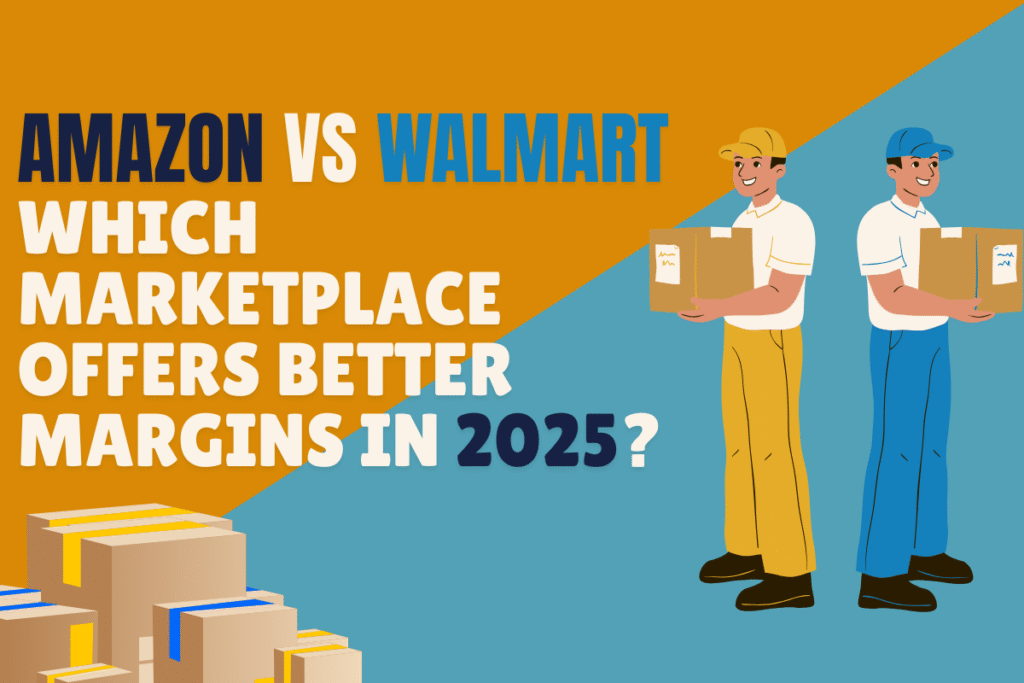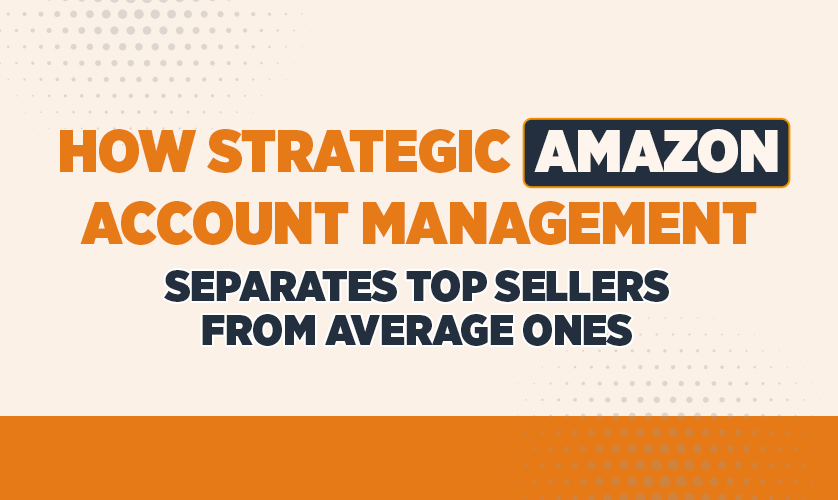
Amazon vs. Walmart: Which Marketplace Offers Better Margins in 2025?
For eCommerce sellers in 2025, the decision to sell on Amazon or Walmart isn’t just about brand visibility or logistics—it’s about margins. Profit margins are the lifeblood of any business, and choosing the wrong platform can mean the difference between scaling and sinking.
Both Amazon and Walmart dominate the online retail space, but their ecosystems are starkly different. In this post, we’ll break down the key differences in fees, competition, customer base, fulfillment models, and overall seller experience to help you figure out where your bottom line stands a better chance of survival.
Platform Overview
Amazon: The Behemoth
Amazon owns nearly 40% of the U.S. eCommerce market in 2025. With over 300 million active customer accounts and the convenience of Prime, it offers sellers enormous reach—but that reach comes at a price. Literally.
Walmart Marketplace: The Challenger
Walmart has made aggressive moves to capture online market share, with Walmart.com now serving over 150 million monthly visitors. Its marketplace is more curated and has stricter onboarding, but fewer sellers mean less competition in many categories.
Seller Fees: Who’s Taking the Bigger Bite?

Amazon Fees (2025)
- Referral Fees: 8–45% depending on category, with most categories averaging 15%.
- FBA (Fulfillment by Amazon) Fees: Increased slightly in 2025 due to higher warehousing and labor costs.
- Subscription Fee: $39.99/month for a professional seller account.
- Other Costs: Storage fees, returns processing fees, long-term storage penalties.
Amazon’s fee structure can eat into profits quickly, especially for small-margin products. While FBA boosts visibility and logistics, it adds layers of cost that need to be carefully calculated.
Walmart Marketplace Fees (2025)
- Referral Fees: 6–20%, with most categories around 15%.
- WFS (Walmart Fulfillment Services) Fees: Competitive with FBA, with slightly lower storage rates in 2025.
- No Monthly Subscription Fee: Walmart doesn’t charge sellers a monthly fee to list products.
Walmart tends to be more transparent with fees and doesn’t pile on hidden charges, making it a leaner option for margin-conscious sellers.
Margin Winner: Walmart. Lower overall costs and no monthly subscription make it more favorable for sellers trying to preserve margins.
Competition & Visibility
Amazon
With over 9 million sellers globally and thousands in each category, standing out requires aggressive advertising (PPC), promotions, and sometimes loss-leader pricing just to win the Buy Box. More competition equals lower margins, unless you’re a brand with strong differentiation.
Walmart
Walmart Marketplace is more selective, meaning fewer sellers in each category. While visibility isn’t as plug-and-play as Amazon’s algorithmic machine, getting noticed is easier due to reduced saturation.
Margin Winner: Walmart. Less competition helps keep prices—and blood pressure—higher.
Fulfillment Models: FBA vs. WFS

FBA (Fulfillment by Amazon)
Pros:
- Access to Prime customers.
- Hands-off fulfillment and returns.
- Higher chances of winning the Buy Box.
Cons:
- Expensive.
- Hidden fees can decimate margins.
- Strict inventory rules.
WFS (Walmart Fulfillment Services)
Pros:
- More cost-effective storage in 2025.
- Simplified pricing structure.
- Access to Walmart’s 2-day shipping badge.
Cons:
- Less automation and backend tools compared to Amazon.
- Slightly longer setup time for new sellers.
Margin Winner: Toss-up. If you’re moving volume and need scale, FBA still dominates. But for leaner operations, WFS gives you more control and potentially better margins.
Customer Behavior and Return Policies

Amazon Shoppers
They’re spoiled. They expect free 2-day shipping, hassle-free returns, and discounts on everything. This behavior pressures sellers to underprice, over-deliver, and absorb costs of returns—which cuts straight into your margins.
Walmart Shoppers
More price-sensitive but also less entitled. Return rates tend to be lower, and expectations around shipping speed and convenience are still catching up to Amazon’s standard.
Margin Winner: Walmart. Less demanding customers = fewer margin-eroding expenses.
Advertising and Marketing Costs

Amazon PPC (Pay-Per-Click)
A necessary evil. To gain visibility, especially as a new seller, you’ll need to spend heavily on Amazon Ads. CPCs (cost-per-click) have climbed steadily through 2024–2025, making customer acquisition expensive.
Walmart Sponsored Products
Walmart’s ad platform is still developing but currently has much lower CPCs compared to Amazon. This means more bang for your marketing buck, especially in less saturated niches.
Margin Winner: Walmart. Lower ad spend = more take-home profit.
Which Platform Is Better for Margins in 2025?

Verdict: Walmart Wins on Margins
If your top priority is preserving and growing your margins in 2025, Walmart comes out ahead. It offers a lower-cost ecosystem, less competition, and a customer base that doesn’t expect gold-plated delivery trucks.
However, Amazon still leads in traffic, brand trust, and conversion rates—so if volume and scale are more important than raw margin, it’s hard to beat. Ideally? Sell on both. Diversify. Be everywhere your customers are—but know where your profits are hiding.
Final Thoughts
Margins aren’t just about selling more—they’re about selling smarter. Amazon may be the jungle, but Walmart is looking more like an oasis in 2025.
Let’s sum it up:
Category | Winner |
Seller Fees | Walmart |
Competition | Walmart |
Fulfillment | Tie |
Return Policies | Walmart |
Advertising Costs | Walmart |




